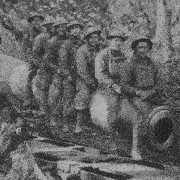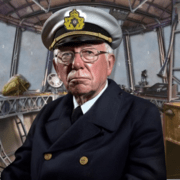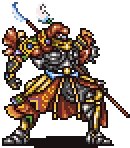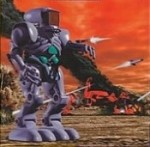|
What is the most powerful flying bug? This poll is closed. |
|||
|---|---|---|---|
| 🦋 |
|
15 | 3.71% |
| 🦇 |
|
115 | 28.47% |
| 🪰 |
|
12 | 2.97% |
| 🐦 |
|
67 | 16.58% |
| dragonfly |
|
94 | 23.27% |
| 🦟 |
|
14 | 3.47% |
| 🐝 |
|
87 | 21.53% |
| Total: | 404 votes | ||
|
tazjin posted:The first five times or so a rabid lib who can't get to nuclear war quickly enough entered the thread were fun, but now I think it's best to just ignore them right away. theres a guy who posts in cspam who doesnt believe in nuclear war, straight up doesnt believe that countries wouldnt use nukes if threatened
|
|
|
|

|
| # ? May 25, 2024 04:16 |
|
OctaMurk posted:every single infantryman on any side of any war ever:
|
|
|
|
OctaMurk posted:we're still hearing about himars a lot on the internet imo There are strikes but they are pretty selective and the Ukrainians themselves admit they can’t run strikes continuously. I do think tactics changed from more hardened structures/targets with heavier AD to artillery or supply vehicles since they are relatively soft targets and Russian point defense can’t be everywhere. That said, if you are launching a entire HIMARS volley to get a single gun or a few trucks, I don’t know if it is exactly the greatest trade considering there is clearly a limited ammo supply. It is better than nothing but at the same time the Ukrainians are utilizing pretty scare resources for each of those “sizzle” videos. The drones are more acceptable but it is also clear the Russians are getting better at taking them out. Ardennes has issued a correction as of 17:34 on Jul 15, 2023 |
|
|
|
Frosted Flake posted:*Phone posting lmao hit me with that advanced industrial grade vyvanse
|
|
|
|
dead gay comedy forums posted:lmao hit me with that advanced industrial grade vyvanse lol
|
|
|
|
dead gay comedy forums posted:lmao hit me with that advanced industrial grade vyvanse  I really should time them so it doesn't overlap with mlmp doing his thing and there are 3 pages between when I post them and conversation picking up again. 
|
|
|
|
Ardennes posted:There are strikes but they are pretty selective and the Ukrainians themselves admit they can’t run strikes continuously. I do think tactics changed from more hardened structures/targets with heavier AD to artillery or supply vehicles since they are relatively soft targets and Russian point defense can’t be everywhere. They are not launching an entire volley. Both Ukrainian propaganda videos, as well as articles published in American prestige media make it clear that they are so low on ammo, they fire between 1 and 2 missiles per strike, with only a few strikes a week. This also explains why they still have a few launchers operational. Firing a single rocket and moving immediately is not an easy target, not is it a particularly valuable target outside of the propaganda sphere. Someone else a little while ago mentioned that the US committed a significant amount of HIMARS. That's not accurate. The package was 12 or 14 launchers. I think there may have been one more supplemental package of a couple more. There are not a lot of HIMARS around. When Poland bought a few hundred, Lockmart basically said "lol lmao good luck", which led to Poland buying Choonmoos, the benefit of those being that it's really fun to say "Chunmoo".
|
|
|
|
There was a recent strike against some tankers that looked like more than a few rockets, the claim it was HIMARS at least, although it may have been just a regular MRLS strike. In the end, they got a tanker or two but one has to wonder if those are the type of “crushing” victories that will win them the war. Likewise, a lot of videos (both sides do this) are intentionally deceptive through editing or simply re-using old footage. Recently, have seen the same BMP with hatches open taken out in 3-4 different ways with some editing and quick cuts. In addition, if there is a strike on a vehicle and there is a only bunch of smoke but no aftermath footage, I usually ignore it as a near miss doesn’t mean anything. (The tanker video at least showed one of them on fire, at least something happened.) It is a good reason I have to be skeptical with big claims on these forums about kill videos because they are intentionally deceptive a lot of the time and have been across this war. Ardennes has issued a correction as of 18:03 on Jul 15, 2023 |
|
|
|
lmao oh my goddd they're just bending over backwards for this poo poo now. just noticed the date is june 5th but lol anyway because they just emailed it to me now for some reason https://www.nytimes.com/2023/06/05/world/europe/nazi-symbols-ukraine.html https://web.archive.org/web/20230605090515/https://www.nytimes.com/2023/06/05/world/europe/nazi-symbols-ukraine.html quote:Nazi Symbols on Ukraine’s Front Lines Highlight Thorny Issues of History quote:and a former Marine infantryman. 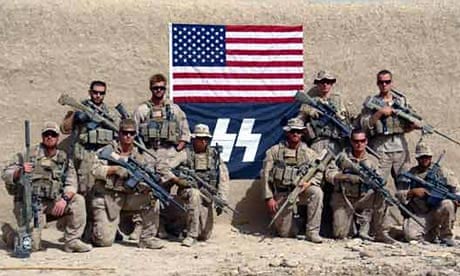
|
|
|
|
Is this the one where the academic quoted is a professor of Judeo-Bolshevism?
|
|
|
|
Frosted Flake posted:Is this the one where the academic quoted is a professor of Judeo-Bolshevism? not sure if you meant this as a joke, but trying to look him up sent me to this actually pretty decent lib blog post on robert scheer's site https://scheerpost.com/2023/06/13/nyt-on-ukraines-nazi-imagery-its-complicated/ e: bryce greene the author is a journalist for FAIR which is a lib-left org tho i actually dont want to sound like "lib" is a sneer here HiroProtagonist has issued a correction as of 18:08 on Jul 15, 2023 |
|
|
|
It’s important not to let right-wing symbols *pausing to give a quick heil to Vyacheslav the Jew Slayer’s monument* seep into our discourse
|
|
|
|
Wait Ukraine didn't get a lot of HYMARS launchers? I read somewhere Ukraine has shot around 10k himars rockets. So that number is false?
|
|
|
|
Considering this was even published in the first place, it looks like the White House is telling Zelensky to shut up and the lose war quietly. https://www.washingtonpost.com/national-security/2023/07/13/zelensky-ukraine-nato-invitation/ quote:Zelensky’s angry tweet on NATO membership nearly backfired
|
|
|
|
Frosted Flake posted:
hahahaha Seriously though, good take. Sure, we get to understand in abstract, but definite examples and commentary from the respective audience gives it a whole new level. From that angle, coming at it from political economy, I think the neoliberal MIC might very well be the best example of why capitalism is about market expansion and profits first and foremost, about commodification: absurd quantities of money are mobilized in R&D and production for equipment that fails to deliver because the point is not the gear, but the profit. I don't remember where I read it; it was a commentary on military industrial capability, not only on production and organization, but also quality. It mentioned how the UK went from the Lee-Enfield, a tremendously reliable rifle (please correct me if it is the case because I am a total layman here and I am just going iirc) to their present service rifle which was a whole comedy shitshow. The gist of the argument was simple: the MIC doesn't win wars. Not having decisive control over the specific means of production causes the society and the state to not have the ability to exercise the political economy of war. This is, imho, the "cognitive/ideological disjunction" that many people (especially the military on the ground) have about why the gently caress they are stuck on a quagmire. It's the same thing on other social spheres under capitalism: that intuitive feel that we do have the resources to solve the problem, why it doesn't happen? It seems to me that military experience causes that effect in a much higher degree because violence makes alienation much more explicit. Like, there are rivers of money on this, why the gently caress there is lovely, defective gear etc. Without the ability of a political economy of war, there is no way to have a resolutive approach: to organize and direct that money, those resources, into actually fulfilling a war to the best possible (or least worst) outcome.
|
|
|
|
stephenthinkpad posted:Wait Ukraine didn't get a lot of HYMARS launchers? I read somewhere Ukraine has shot around 10k himars rockets. So that number is false? Supposedly, a lot of that supply was front loaded around the Kherson offensive and mysteriously the number of strikes has rapidly decreased to the point they will only do a few fire missions a day.
|
|
|
|
stephenthinkpad posted:Wait Ukraine didn't get a lot of HYMARS launchers? I read somewhere Ukraine has shot around 10k himars rockets. So that number is false? Ukraine got 20 launchers and thousands(?) of GMLRS guided rockets. Each guided rocket costs a bit over $100,000. I don't know how many normal unguided rockets Ukraine has received or shot for the HIMARS, or if they got any at all. https://www.defensenews.com/land/2021/03/30/lockheed-scores-12b-contract-to-build-us-armys-guided-rocket-on-heels-of-extended-range-test/ https://www.csis.org/analysis/rebuilding-us-inventories-six-critical-systems 
BearsBearsBears has issued a correction as of 18:37 on Jul 15, 2023 |
|
|
|
arms procurement is like if gilette made tons of razors but hardly any razor cartridges
|
|
|
|
You can't smuggle these himars rockets to the ME market right? Ukraine must have shot a few thousands of the rockets. If the US is only willing to give 20 launchers, how many F16 are they willing to give?
|
|
|
|
The US donated 20 HIMARS but 10 other similar launchers (M270s) were donated by other NATO countries along with other Soviet era MRLS systems that have been donated or Ukraine has previously. It gets a bit murky. So far the US has promised zero f-16s.
|
|
|
|
has ukraine gotten nato rations yet can we watch someone rate the ukranian rations on youtube
|
|
|
|
stephenthinkpad posted:You can't smuggle these himars rockets to the ME market right? Ukraine must have shot a few thousands of the rockets. I mean, it seems pretty obvious that the number of launchers is not the limiting factor. There's just nothing to launch.
|
|
|
|
Lpzie posted:i read it all FF, thank you! If FF posts were a little longer, they would be a novella.
|
|
|
|
dead gay comedy forums posted:I don't remember where I read it; it was a commentary on military industrial capability, not only on production and organization, but also quality. It mentioned how the UK went from the Lee-Enfield, a tremendously reliable rifle (please correct me if it is the case because I am a total layman here and I am just going iirc) to their present service rifle which was a whole comedy shitshow. Weapon of Choice, the book on the MIC and contemporary small arms development. Weapon of Choice posted:Into Africa with the FN Minimi LMG
|
|
|
|
gradenko_2000 posted:https://twitter.com/GalenMetzger1/status/1679939044447522818?t=JI5fg2L3VuEK9-EnvWwuVA&s=19 battle of moscow is the correct answer anyway.
|
|
|
|
Frosted Flake posted:Anyway, because this post has gone on too long and I have to run errands I'll leave it to someone else to pick up where I left off, but after 1991 the entire history of the air war over Vietnam was rewritten
|
|
|
|
I present to you: Mullen of Choice: What if a Rifle Was Gay?
|
|
|
|
I would argue once the Germans committed to going through Barbarossa, not finishing off the British, it just the Soviet Union was a no win scenario. All those are joke responses anyway.
|
|
|
|
gradenko_2000 posted:https://twitter.com/berlin_bridge/status/1679934822305677337?t=1dNqFHG8cO5a8ibxK-h95g&s=19
|
|
|
|
sum posted:Considering this was even published in the first place, it looks like the White House is telling Zelensky to shut up and the lose war quietly. lol about 70 years ago there would be a CIA guy tasked to beat him up until he gave the approved version of the speech à la Lansdale in The Philippines
|
|
|
|
the peace trolls are at it again https://twitter.com/bennyjohnson/status/1679925565036347397 comedyblissoption has issued a correction as of 19:47 on Jul 15, 2023 |
|
|
|
Hitler should have allied with Soviet to fight all the Anglo/Oceanic powers. Big mistake. World Island Supremecy is the only way to go.
|
|
|
|
stephenthinkpad posted:Hitler should have allied with Soviet to fight all the Anglo/Oceanic powers. Big mistake. hmm
|
|
|
|
gradenko_2000 posted:https://twitter.com/berlin_bridge/status/1679934822305677337?t=1dNqFHG8cO5a8ibxK-h95g&s=19 lol https://twitter.com/berlin_bridge/status/1654854016898138118 Apparently posting like this means you sympathize with Ukrainians, but saying maybe Ukraine can't win on its terms and failed offensives are a waste of human life means you're a monster. PhilippAchtel has issued a correction as of 19:41 on Jul 15, 2023 |
|
|
|
stephenthinkpad posted:Hitler should have allied with Soviet to fight all the Anglo/Oceanic powers. Big mistake. i.. uhhh hmmmm edit: thought really hard about this and i don't think that would have been good at all Regarde Aduck has issued a correction as of 19:46 on Jul 15, 2023 |
|
|
|
stephenthinkpad posted:Hitler should have allied with Soviet to fight all the Anglo/Oceanic powers. Big mistake. thats exactly what happened
|
|
|
|
tucker carlson asks if we should be sending cluster bombs to ukraine https://twitter.com/RealVinnieJames/status/1679893222112493569
|
|
|
|
https://www.politico.com/news/2023/07/13/biden-military-reservists-europe-deployment-00106271quote:Biden orders 3,000 reservists to be ready for Europe deployments Is Biden mobilizing troops to support Ukraine
|
|
|
|
Marenghi posted:https://www.politico.com/news/2023/07/13/biden-military-reservists-europe-deployment-00106271 Can't get enough kids to join the army anymore, so instead they get to deploy cops that play soldier every few weekends. It'd be fun to compare alcohol-related incidents near where ever these guys are going in a few months.
|
|
|
|

|
| # ? May 25, 2024 04:16 |
|
the only candidates or sitting politicians saying ukraine should sue for peace asap like carlson is saying here that im aware of are west and trump https://twitter.com/KanekoaTheGreat/status/1677368229499645953
|
|
|






